Fashion design is a dynamic blend of creativity, precision, and craftsmanship. While digital tools have transformed the industry, physical, offline tools remain indispensable for hands-on work with fabrics, patterns, and garments. These tools allow designers to feel the texture of materials, shape garments directly on dress forms, and achieve precise measurements for a perfect fit. Below, we outline the key types of physical fashion designing tools, categorized by their function, to help both aspiring and professional designers build an effective toolkit.
Why Physical Tools Matter

Physical tools provide a direct connection to the materials, allowing designers to understand fabric behavior, drape, and fit. They are often more accessible and cost-effective for beginners compared to advanced digital software. Additionally, traditional techniques like draping and pattern making rely heavily on these tools for accuracy and creativity.
Categories of Fashion Design Tools
A. Draping Tools
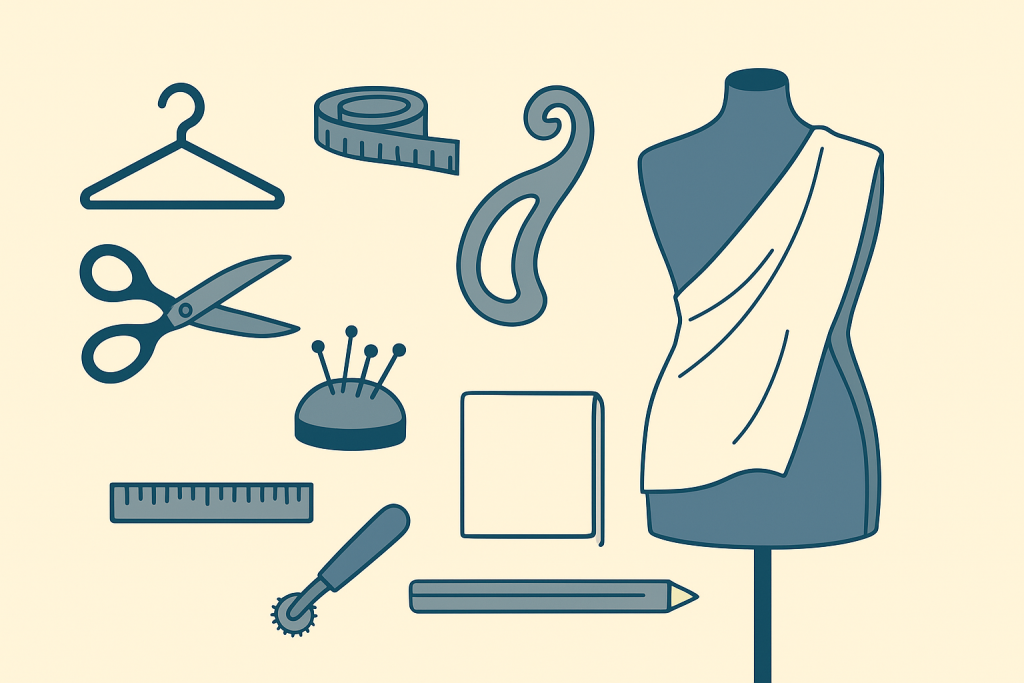
Draping involves shaping fabric directly on a dress form to create a garment’s structure. This technique requires tools that help secure, measure, and mark fabric accurately. Key draping tools include:
- Muslin: A lightweight, affordable fabric used for creating initial designs and prototypes.
- Dressmaker Pins: Essential for securing fabric to the dress form during draping.
- Measurement Tape: Used for taking precise body measurements and ensuring proper fit.
- French Curve, Hip Curve, Styling Curve: Curved rulers for marking smooth curves on fabric, such as necklines, armholes, and waistlines.
- Fabric Scissors: Available in various types, including lightweight scissors for delicate fabrics like silk and heavy shears for thicker materials.
- Adhesive and Non-Adhesive Style Tape: Used to mark style lines and seams on fabric.
- Pencils (Blue and Red): For marking temporary and final adjustments on fabric and patterns.
- Tracing Paper and Wheel: For transferring markings between fabric layers or patterns.
- L-Square and Yardstick: For creating straight lines and measuring larger sections of fabric.
B. Dress Forms
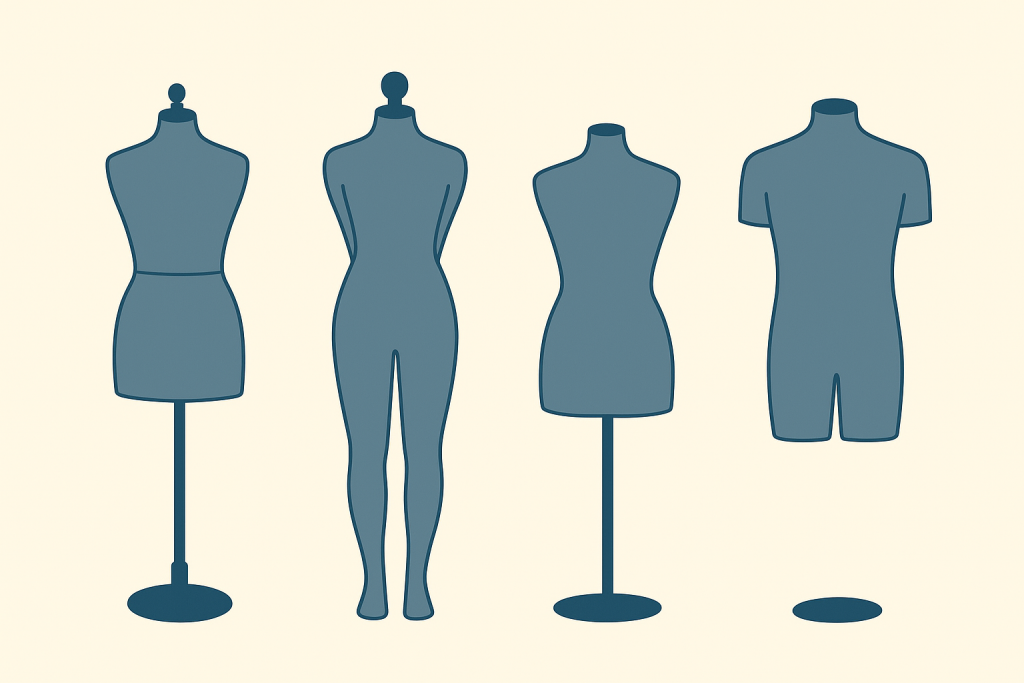
Dress forms, or mannequins, are critical for fitting and draping garments. They come in various types to suit different design needs:
- Basic Dress Form: Adjustable to accommodate different sizes, ideal for general use.
- Full Body Dress Form: Available in sizes 2 to 18, used for designing complete garments.
- Half Body Dress Form: Useful for designing tops or bottoms separately.
- Male Dress Form: Specifically designed for men’s clothing, available in sizes small to large.
C. Fabric Pressing Tools
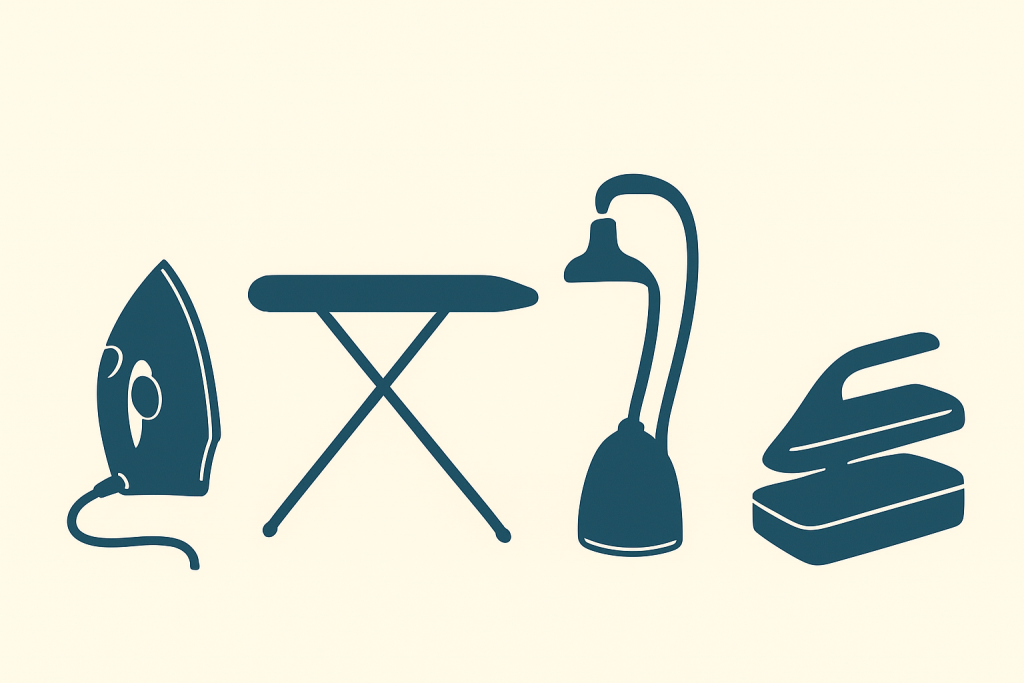
Proper pressing ensures a professional finish for garments. Fabric pressing tools include:
- Iron and Steam Iron: Used to remove wrinkles and shape fabric.
- Ironing Board: Available in tabletop or standard sizes for a stable pressing surface.
- Fabric Steamer: Ideal for steaming out wrinkles and shaping delicate fabrics.
- Steam Press: A heavy-duty tool for pressing large pieces or multiple layers of fabric.
D. Fashion Sketching and Art Tools
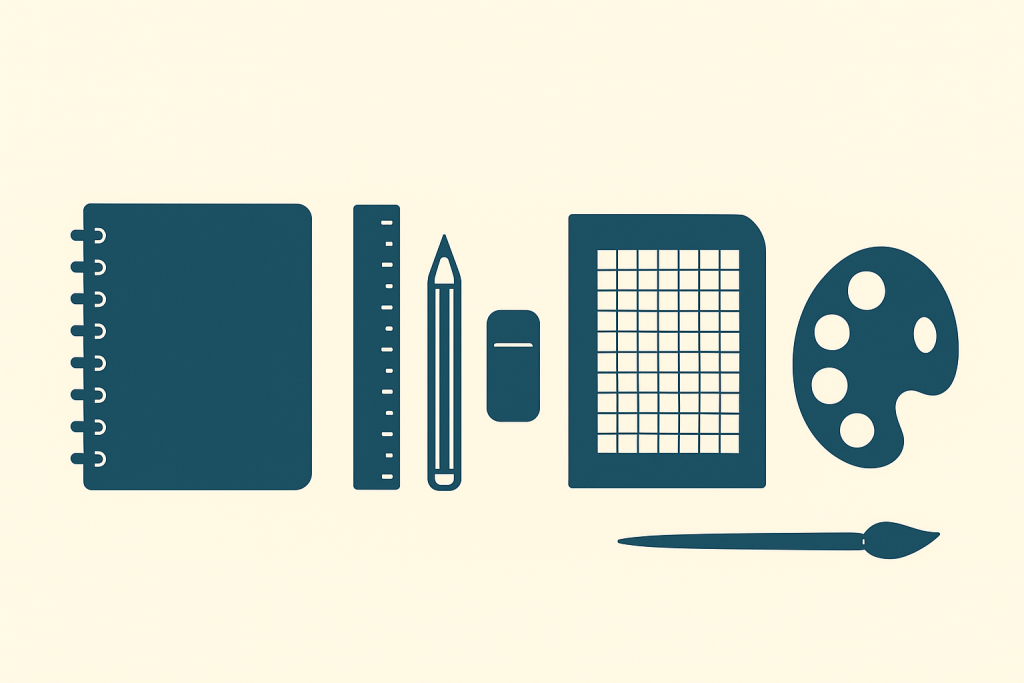
Sketching is the first step in visualizing a design. Essential sketching tools include:
- Drawing Pencils: Various grades (e.g., HB, 2B, 4B) for shading and detailing.
- Sketchbooks: Dedicated notebooks for sketching design ideas.
- Rulers: Clear plastic rulers for drawing straight lines and measurements.
- Erasers: Non-abrasive erasers for correcting mistakes in sketches.
- Graph Paper: For technical sketches and pattern drafting.
- Carbon Paper: For transferring sketches or patterns.
- Watercolor Paints and Brushes: For adding color and texture to sketches.
E. Sewing Tools
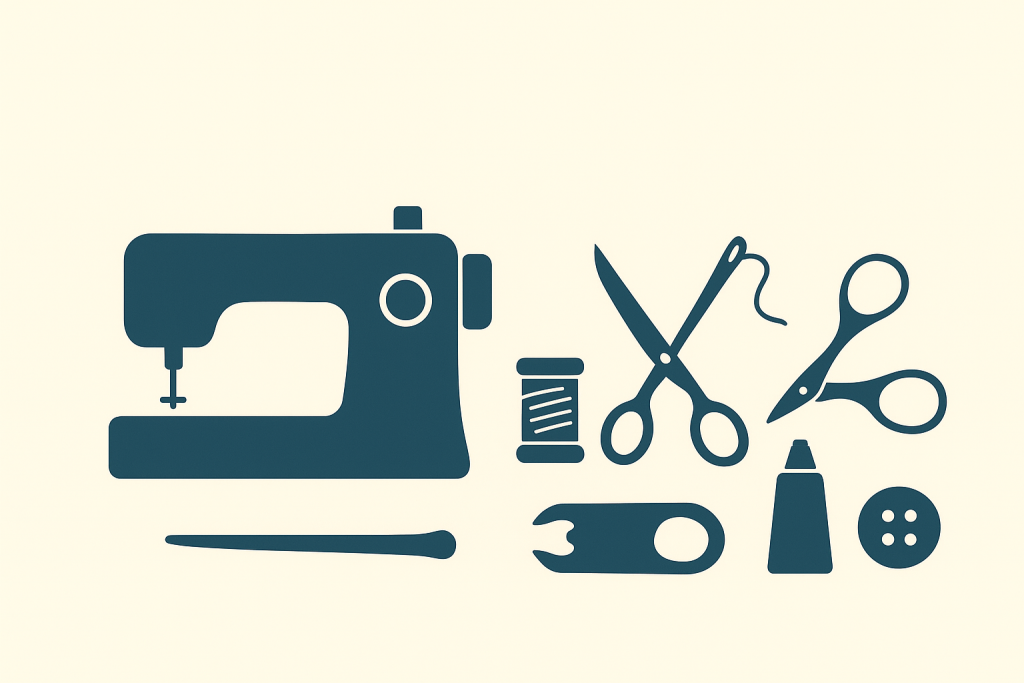
Sewing is a core component of garment construction. Key sewing tools include:
- Sewing Machines: Available in various types for different fabrics, from basic to advanced models.
- Sewing Needles: Various sizes and types for hand and machine sewing.
- Threads: Matching the fabric’s color and type for seamless finishes.
- Scissors: Small scissors for cutting threads and trimming small pieces.
- Thread Cutter: A quick tool for cutting threads during sewing.
- Glue: Used for temporary holds or attaching trimmings.
- Decorative Trimmings: Includes buttons, zippers, ribbons, and other embellishments.
F. Pattern Making Tools
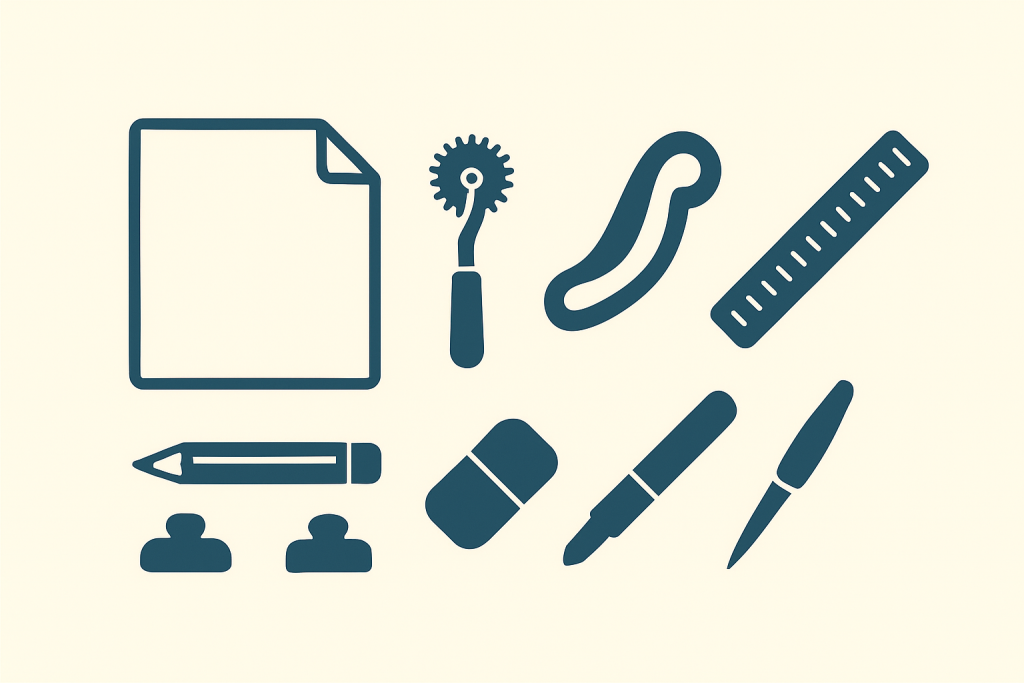
Patterns serve as the blueprint for garments, requiring precise tools for drafting and marking:
- Pattern Paper: White or brown paper for drafting and tracing patterns.
- Tracing Wheel and Paper: For transferring pattern markings.
- Curves: French curve, hip curve, and styling curve for shaping pattern pieces.
- Rulers: Plastic rulers and yardsticks for straight lines and measurements.
- Pencils and Erasers: For marking and correcting pattern details.
- Weights: To hold pattern paper in place during cutting.
- Notcher: A tool for marking notches on patterns for alignment.
- Bradawl: Used to punch holes in patterns for darts or pocket positions.
G. Cutting Mats
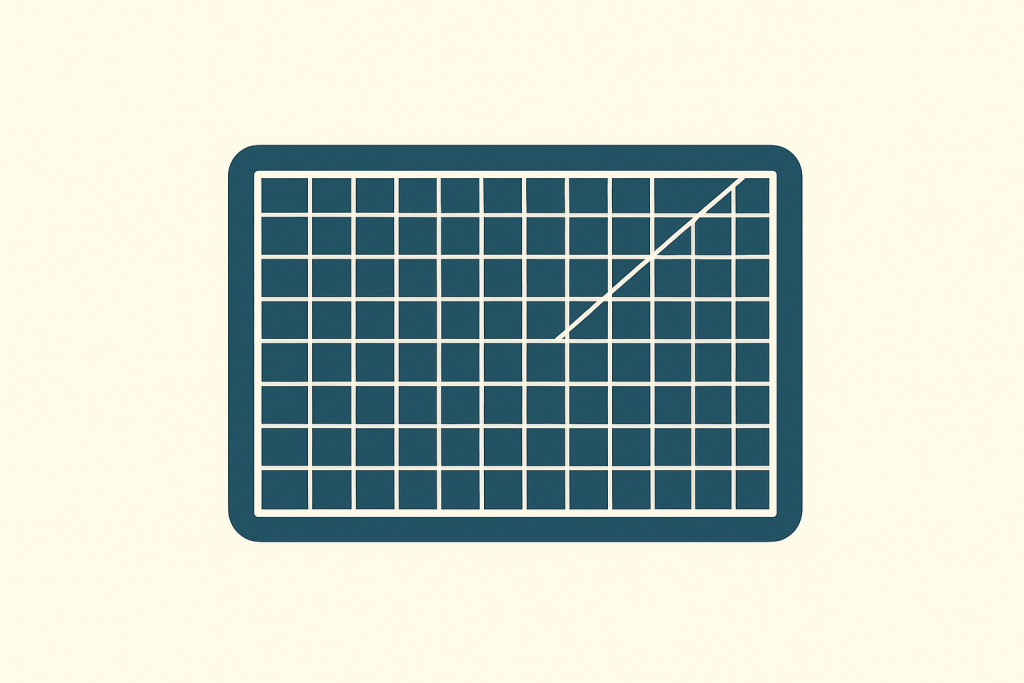
Cutting mats protect work surfaces and provide a grid for accurate cutting. They are available in sizes like A1, A2, A3, and A4 and are often self-healing to withstand repeated use.
H. Product Development Tools
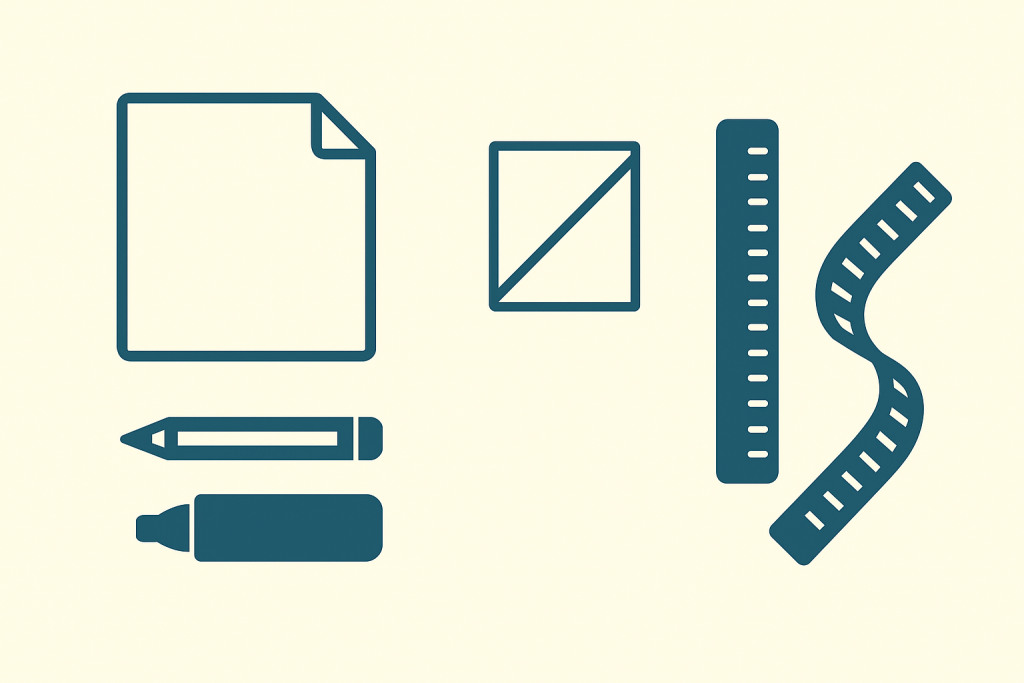
For technical drawings and product development, designers use:
- White Bond Paper: For creating technical sketches and specifications.
- Tracing Paper: For overlays and refining designs.
- Pencils and Markers: For detailed technical drawings.
- Rulers and Measurement Tapes: For precise measurements.
Detailed Description of Key Tools
Below is a detailed look at some of the most critical tools, their uses, and where to find them:
| Tool | Description |
| French Curve | A flexible ruler for drawing smooth curves on patterns, such as necklines and armholes. |
| Hip Curve | Designed for curved seams around the hips, ensuring a perfect fit. |
| Fabric Shears | Heavy-duty scissors with long blades for cutting multiple layers of fabric. |
| Lightweight Scissors | Ideal for delicate fabrics like silk, with blades that sit flat for precision. |
| Tailor’s Chalk | Used for temporary markings on fabric, available in various colors. |
| Bradawl | A sharp tool for punching holes in patterns for darts or pocket positions. |
| Button Gauge | Measures button sizes in centimeters and ligne (a traditional unit). |
| Compass | Used for creating circular shapes, such as waistlines on skirts or frills. |
| Magnetic Pin Holder | A round plastic holder with a magnetic grip to securely hold sewing pins. |
Investing in high-quality tools is crucial for efficiency and precision. For example, a sturdy sewing machine with a metal base is more reliable than a plastic one, especially for beginners. Similarly, high-quality fabric shears can make cutting easier and more accurate, reducing fabric waste.
Why Physical Tools Are Still Essential
While digital tools like 3D modeling software (e.g., CLO 3D) have gained popularity, physical tools remain vital for several reasons:
- Tactile Feedback: Physical tools allow designers to feel the fabric’s texture and weight, which is critical for understanding drape and fit.
- Precision and Accuracy: Tools like French curves and rulers ensure precise measurements and shapes, which are essential for pattern making.
- Cost-Effectiveness: For beginners, physical tools are often more affordable than professional-grade software.
- Traditional Techniques: Techniques like draping and hand-sewing rely heavily on physical tools, preserving the artistry of fashion design.
Conclusion
Physical fashion design tools are the backbone of the creative process, enabling designers to transform ideas into tangible garments. From muslin and dressmaker pins to sewing machines and cutting mats, each tool plays a vital role in achieving precision and creativity. Aspiring designers should prioritize building a comprehensive toolkit, while professionals can benefit from upgrading to high-quality tools for better results. By mastering these tools, designers can create garments that are not only visually stunning but also well-crafted and functional.
For more information on specific tools and where to purchase them, explore resources from 1st Class Patterns, Textile Learner, and University of Fashion.


sudan luxury tours Amelia S. ★★★★★ Private van tour saved us! Customized itinerary for grandma’s mobility issues. Accessible paths at Love Valley were a blessing. https://www.linkedin.com/posts/mukarram-afsar-syed-632b3742_tourism-hyderabad-hyderabadi-activity-7039146801932746752-s-ki
AXECO Model Y Juniper Steering Wheel CollectionsSince 2003, Axeco has remained faithful to its artisanal model and its humanist values. The freedom to create, the constant quest for beautiful materials, and the transmission of exceptional know-how which enable the creation of useful, ergonomic, and elegant steering wheel which stand the test of time – forge the uniqueness of Axeco.